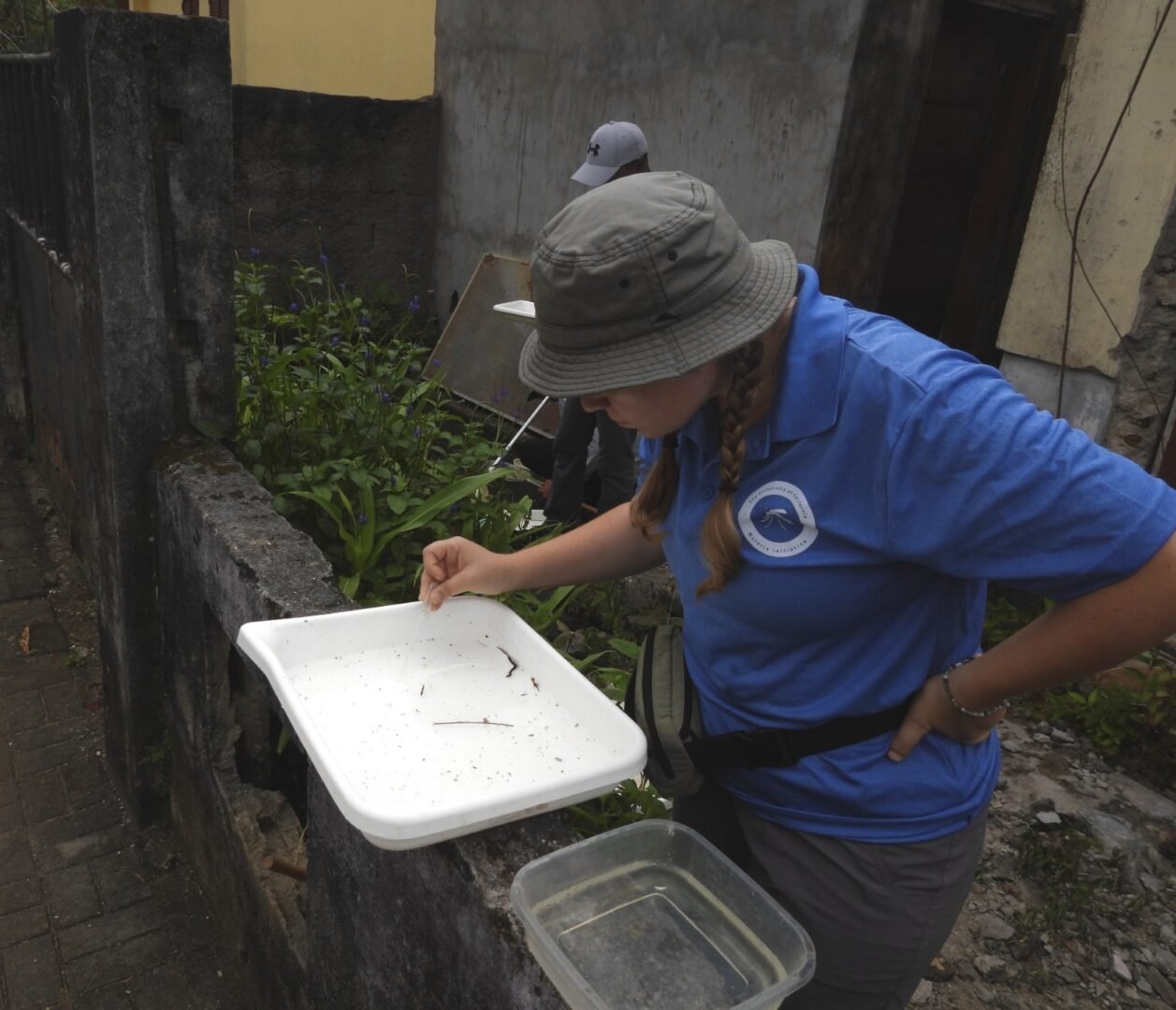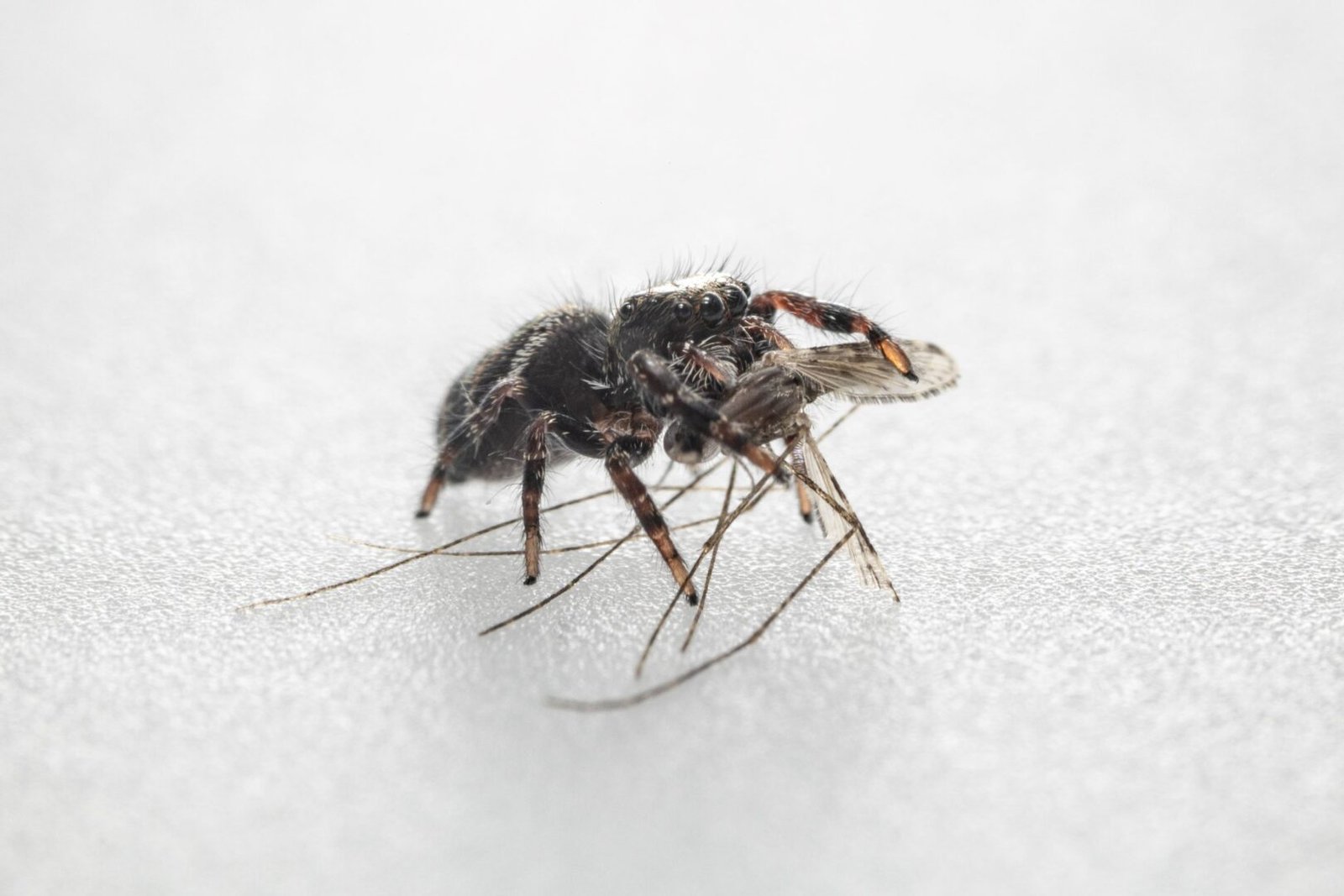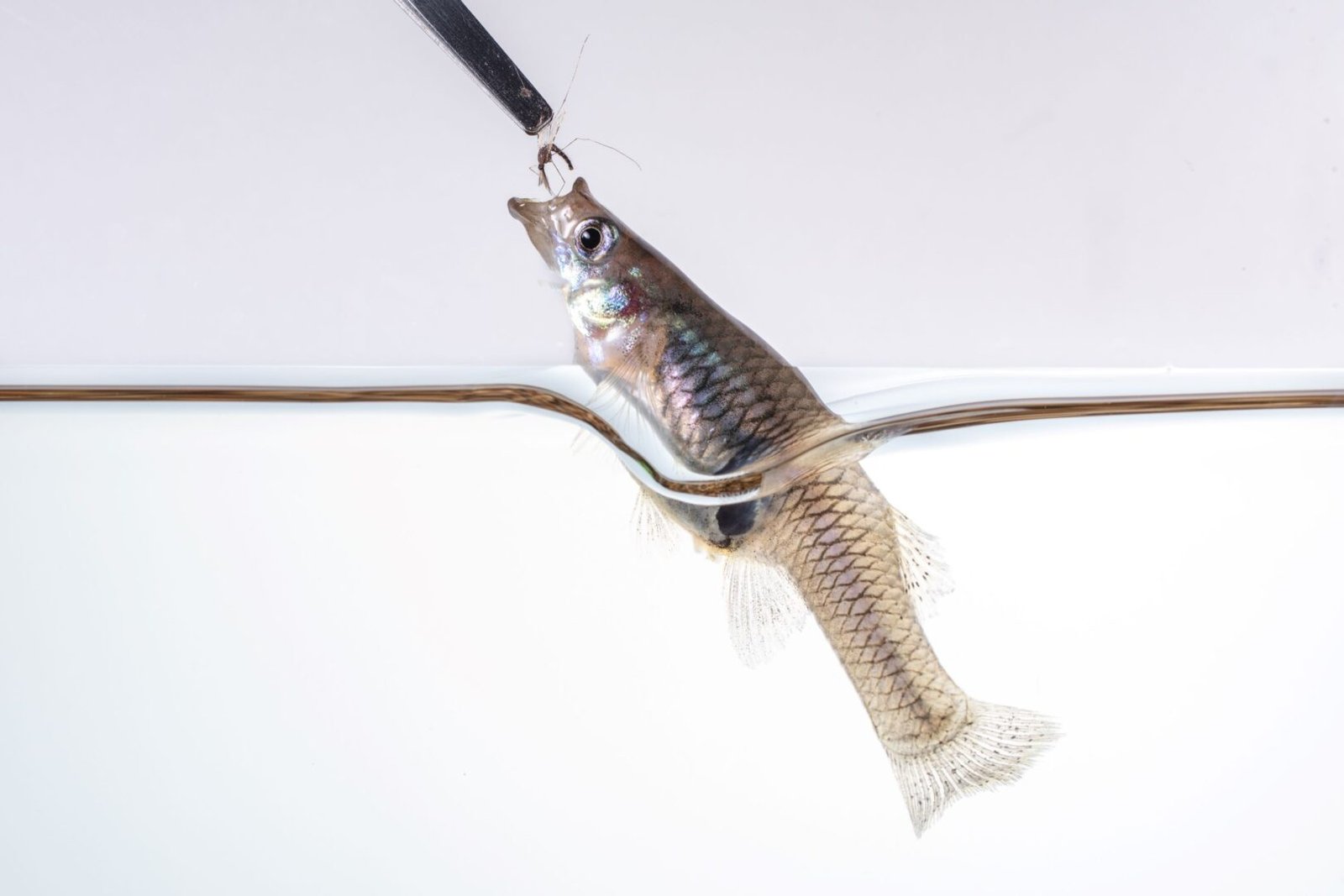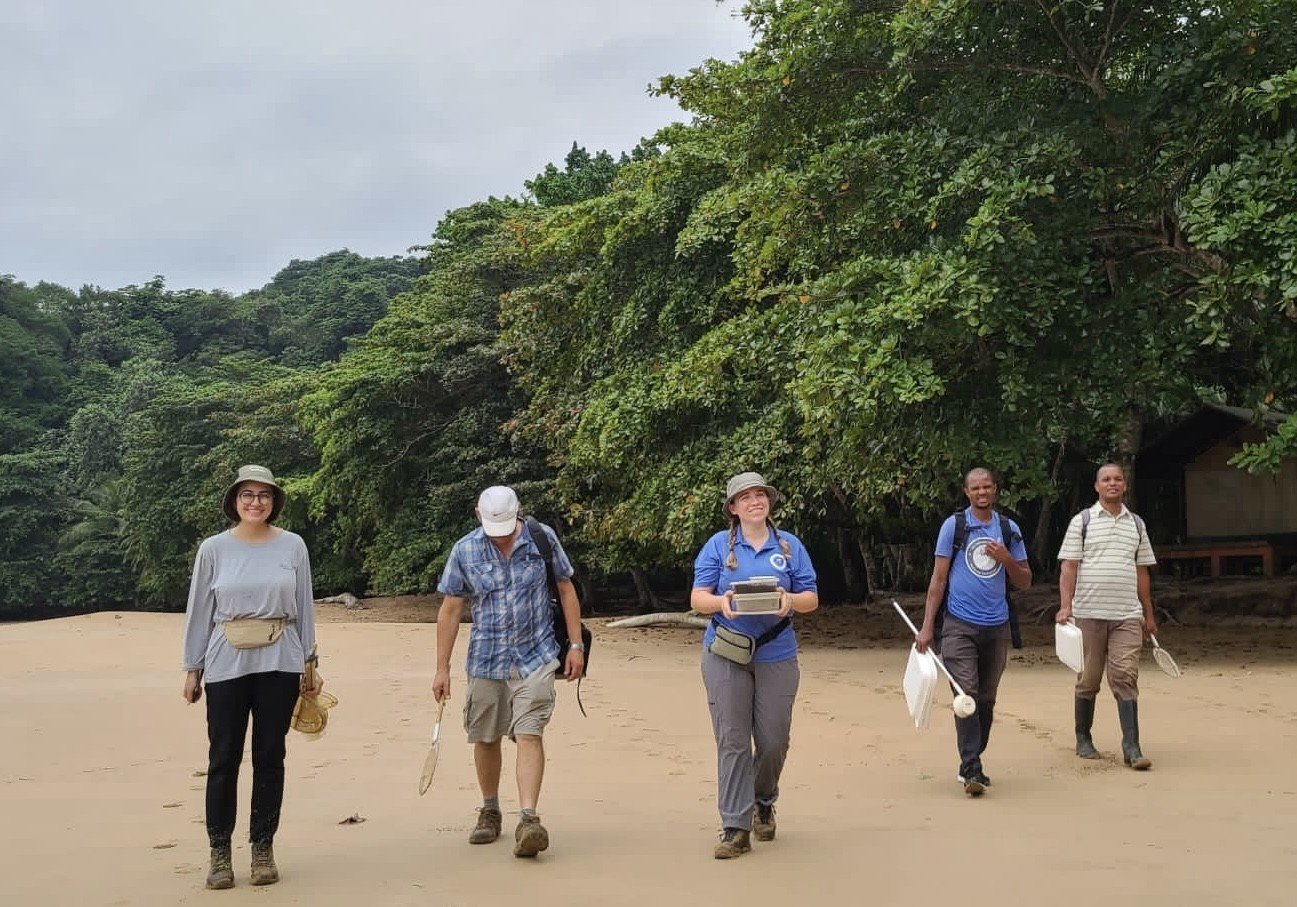At the University of California Malaria Initiative (UCMI), we are working to develop genetically modified mosquitoes that are unable to transmit malaria. Alongside laboratory studies exploring the biology and behavior of these mosquitoes, we are also investigating how they may interact with other species in the environment. In a recently published paper, we explored how two predator species – mosquitofish and jumping spiders – respond when fed the gene drive mosquitoes we are working to develop.

Through laboratory studies and field surveys, UCMI is studying the role of Anopheles coluzzii as prey. Photograph: UCMI
In nature, predators feed on both larvae and adult Anopheles coluzzii mosquitoes. In the lab at UC Davis, we fed young mosquitofish and jumping spiders a diet of the gene drive Anopheles coluzzii mosquitoes and wild mosquitoes. We then tracked their growth by measuring their weight, length, and maturity rates over time.


The jumping spider (left) and mosquitofish (right) were selected as predator species for the dietary trials. Photographs: Mark Unger
Our study showed that there were no adverse effects in either mosquitofish or spiders that were fed a diet of gene drive mosquitoes. Mosquitofish showed no significant difference in the average weight, length, or maturity rates regardless of diet. Spiders ate more mosquitoes and matured more quickly, suggesting that gene drive mosquitoes may be easier for spiders to catch than their wild counterparts. These results suggest that the nutritional content of gene drive mosquitoes is similar to that of wild-type mosquitoes, but that they may be more vulnerable to predation.

Members of the team collecting wild Anopheles coluzzii larvae in São Tomé and Príncipe. Photograph: UCMI
These insights are important for helping us predict the success and environmental impact of the technology we are working to develop. By studying how Anopheles coluzzii mosquitoes fit into the ecological web, we hope to further inform the responsible development of new technologies to fight malaria in São Tomé and Príncipe.
Read the full study here.
